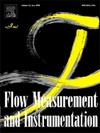Wake characteristics of a circular cylinder with a short flat plate at an angle in one of the separated shear layers
IF 2.3
3区 工程技术
Q2 ENGINEERING, MECHANICAL
引用次数: 0
Abstract
The flow over the circular cylinder and its wake is an important topic for many investigators because of its practical importance in engineering applications. It is a well-known fact that a plate at an angle of attack generates circulation. By keeping a flat plate in the wake at an angle of attack, its effect on the wake has not been studied. In the present investigation, a short flat plate is placed in one of the separated shear layers behind the circular cylinder to see its effect on the wake structure.
The investigation is carried out in three phases. Initially, flow visualization is done by colour dye injection method at Re = 650; in the second phase, the surface pressure measurements are done by using surface pressure taps and manometers at Re = 19300 and in the third phase, the wake measurements are done by using two-dimensional particle image velocimetry technique at Re = 19300. The plate is placed asymmetrically at various angles, and it is moved at two streamwise locations, G/D = 0.5 and 1. The effect of a short flat plate on the suppression of vortex shedding, reduction of drag and changes in the wake structure is studied in the present investigation. It is seen from the flow visualization results that at a lower Reynolds number, a short flat plate suppresses the vortex shedding. At higher Reynolds number, pressure measurements show a considerable reduction in drag of 21 % for a short plate angle of α = 12 at G/D = 0.5. The turbulent kinetic energy and the Reynolds stresses, both normal and shear, decrease sharply in comparison with those for the bare cylinder by 47 %, 50 %, and 53 %, respectively.
在一个分离剪切层中夹角有短平板的圆柱的尾迹特性
由于其在工程应用中的实际意义,圆柱及其尾迹的流动是许多研究者的重要课题。这是一个众所周知的事实,一个板在一个攻角产生循环。在尾流中保持一定迎角的平板对尾流的影响尚未研究。在本研究中,在圆柱后面的一个分离剪切层中放置一个短平板,以观察其对尾流结构的影响。调查分三个阶段进行。最初,通过彩色染料注射法在Re = 650时进行流动显示;在第二阶段,在Re = 19300处使用表面压力水龙头和压力计进行表面压力测量;在第三阶段,在Re = 19300处使用二维粒子图像测速技术进行尾迹测量。板以不同角度不对称放置,并在G/D = 0.5和1两个流向位置移动。本文研究了短平板对抑制旋涡脱落、减小阻力和尾流结构变化的影响。从流动显示结果可以看出,在较低雷诺数下,短平板对旋涡脱落有抑制作用。在较高的雷诺数下,压力测量表明,当G/D = 0.5时,短板角为α = 12时,阻力显著降低21%。法向和剪切的湍流动能和雷诺应力与裸柱相比分别下降了47%、50%和53%。
本文章由计算机程序翻译,如有差异,请以英文原文为准。
求助全文
约1分钟内获得全文
求助全文
来源期刊

Flow Measurement and Instrumentation
工程技术-工程:机械
CiteScore
4.30
自引率
13.60%
发文量
123
审稿时长
6 months
期刊介绍:
Flow Measurement and Instrumentation is dedicated to disseminating the latest research results on all aspects of flow measurement, in both closed conduits and open channels. The design of flow measurement systems involves a wide variety of multidisciplinary activities including modelling the flow sensor, the fluid flow and the sensor/fluid interactions through the use of computation techniques; the development of advanced transducer systems and their associated signal processing and the laboratory and field assessment of the overall system under ideal and disturbed conditions.
FMI is the essential forum for critical information exchange, and contributions are particularly encouraged in the following areas of interest:
Modelling: the application of mathematical and computational modelling to the interaction of fluid dynamics with flowmeters, including flowmeter behaviour, improved flowmeter design and installation problems. Application of CAD/CAE techniques to flowmeter modelling are eligible.
Design and development: the detailed design of the flowmeter head and/or signal processing aspects of novel flowmeters. Emphasis is given to papers identifying new sensor configurations, multisensor flow measurement systems, non-intrusive flow metering techniques and the application of microelectronic techniques in smart or intelligent systems.
Calibration techniques: including descriptions of new or existing calibration facilities and techniques, calibration data from different flowmeter types, and calibration intercomparison data from different laboratories.
Installation effect data: dealing with the effects of non-ideal flow conditions on flowmeters. Papers combining a theoretical understanding of flowmeter behaviour with experimental work are particularly welcome.
 求助内容:
求助内容: 应助结果提醒方式:
应助结果提醒方式:


